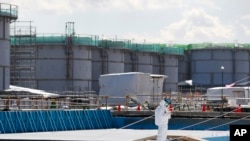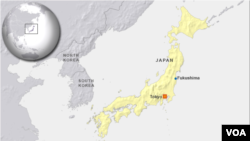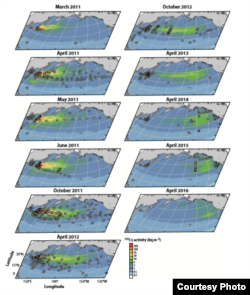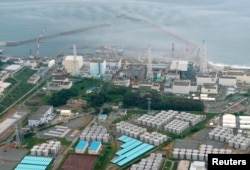A massive earthquake and tsunami in April 2011 caused the Fukushima Daiichi nuclear power plant in Japan to melt down, releasing radiation into the surrounding environment.
While some of this radiation was released directly into the ocean, most of the radiation went into the atmosphere, where it spread and eventually rained into the ocean.
The ocean is full of radiation from natural sources, as well as from nuclear testing in the early 1960s. This radiation circulates throughout the ocean and is ingested by marine life.
While scientists had a gauge on levels of radiation in the ocean before the Fukushima incident, they weren’t sure what would happen with the additional radiation from the meltdown.
Monitoring the fallout in the oceans can be challenging. The biggest hurdle to testing is the sheer size of the ocean, which makes monitoring and sampling difficult. Another problem is that water is constantly in motion, affected by wind, competing currents and temperature, which can make predictions difficult.
International teams of scientists are working to discover how these radioactive particles are traveling throughout the ocean.
Going with the flow
A review, published in the Annual Review of Marine Science, of the condition of the oceans five years after Fukushima was presented at the Goldschmidt Conference in Japan this past week.
“It’s a really timely review. This particular group ... of experts ... have produced a really great overview of what has happened ... what is likely to happen and what that means for both environmental and public health,” Jay Cullen, chemical oceanographer and head of the Fukushima InFORM project in Canada, told VOA.
Results of the study show radiation levels in the ocean spread much as the models had projected.
The main radiation plume from the disaster surfed along currents and reached western North American shores in June 2013. Radiation levels, steadily rising as the plume travels along the coast, are expected to peak before the end of this year.
The levels detected, even though they are rising, are very low and do not pose any risk to humans, scientists said.
Swimming in the ocean for eight hours a day for an entire year, even in the highest levels measured, would give you a dose of radiation 1,000 times smaller than what you’d receive during a dental X-ray, Ken Buesseler, oceanographer and lead author of the review, told VOA.
In the U.S., individual states are responsible for monitoring radiation levels in the ocean to ensure the levels are safe for people and marine life. However, the level of monitoring done by states does not meet the level for research.
While the testing methods used by states cannot detect radiation at the low levels quoted in the study, states such as Alaska collaborate with researchers and federal agencies, sharing samples and testing results.
Better understanding
Buesseler’s work at the Woods Hole Oceanographic Institute gave Alaska a much better understanding of the movement of radioactive particles in the ocean, said Marlena Brewer, an environmental program specialist with the state’s Department of Environmental Conservation.
But, “we don’t really need to see down to ... those levels [of the study], because the established safety levels for foodstuffs is orders of magnitude higher," Brewer said.
Bob Gerlach, a state veterinarian for Alaska who also runs the state’s fish monitoring program, said understanding radiation transport in the oceans at the levels in the review is important, but it is also a tremendous economic investment. He said by having several agencies and groups work together, the cost of these types of studies is more manageable.
“The collaborative effort shows ... the ability of these different agencies to work together to come up with information that’s going to be a benefit to the general public,” Gerlach said.
Five years on, Buesseler said, it's important to keep monitoring the radiation levels in the oceans.
Although the Fukushima radiation plume poses a low threat to humans, radiation is present throughout the ocean, from the surface to the floor. Small amounts of radiation are also entering the ocean because of runoff from radioactive particles in the land near the power plant.
Buesseler said that even though “radioactive contaminants are getting lower," studies of radiation levels should continue, both to track ongoing releases and to be better prepared should an incident like Fukushima occur in the future.














